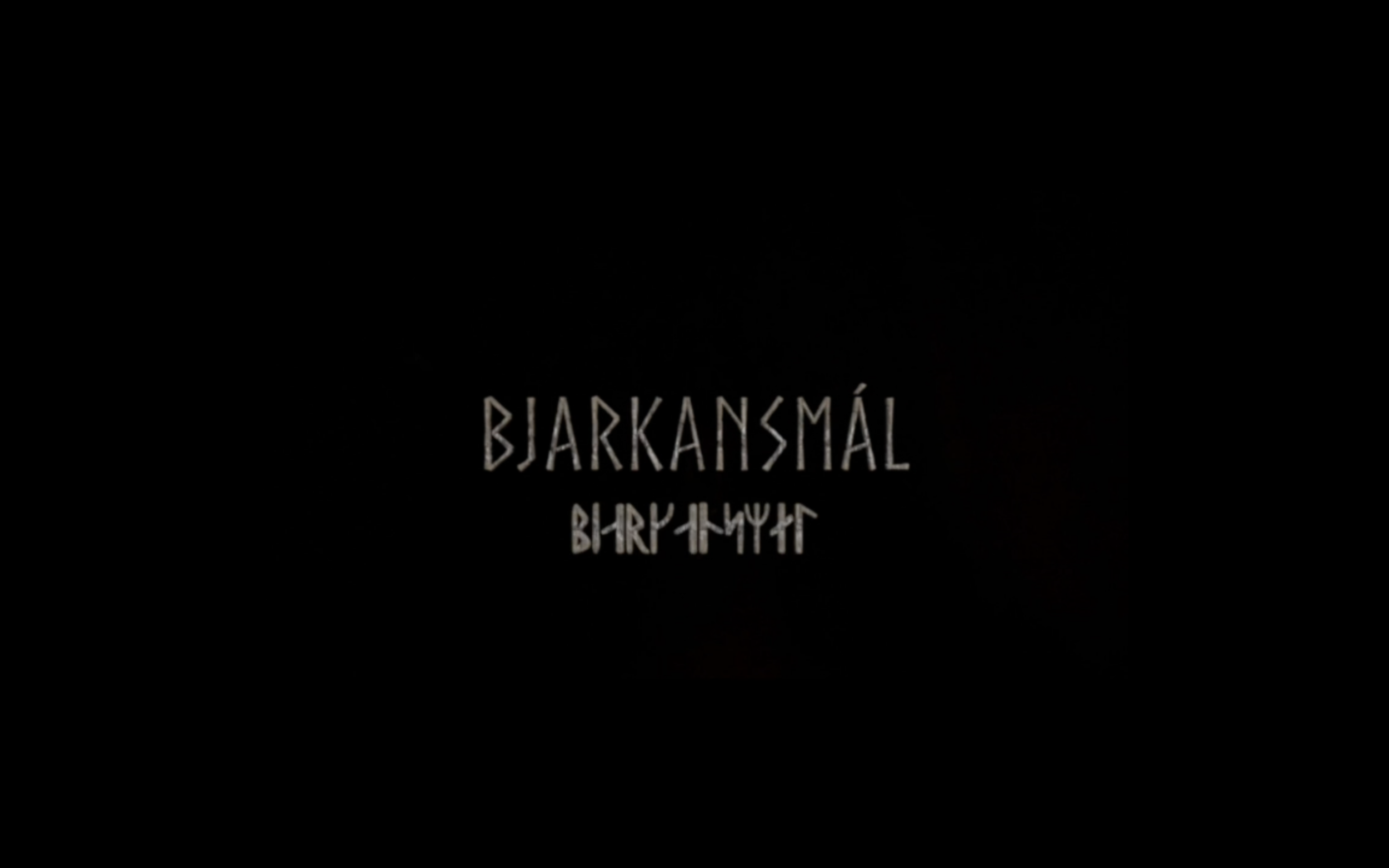
A man washes ashore on a strange, cold land, alone, afraid, and confused. His spirit dead, his being fateless, he must muster the courage to peer inward to navigate this realm and come into living. As he journeys through the surreal environment, encountering representations of deities along his path, he learns to tune his senses and alter his perspective. Existing within and amongst nature, he realizes himself in a collective alongside those who came before him and all who will follow. Finally, ascending from the cacophonous madness, he bears these newfound truths to ascension joining the fabric of continuous fate.
Bjarkansmàl
The Word of the Birch
The piece is greatly inspired by Nordic Animism, a pre-christian perspective of coexistence with the Earth and all its inhabitants, living or nonliving. Continuing this relation, the work is styled after aspects of the Old Nordic culture. The piece urges us, through echoes of our still present forebears, to reconsider ourselves in the fabric of our surroundings, finding harmony within and without, to emerge from cataclysmic Ragnarok into a lush new beginning.
Forged in and by the natural landscape of Yorkshire, this multimedia experience is an exercise in land connection. Experimenting with and inspired by Animist cosmologies, the piece investigates relationship with landscape, both inner and outer.
Constructed as thesis work for the Leeds School of Art at Leeds Beckett University, the piece intricately weaves several methods of performance and art, blending ancient and modern media into a timeless legend. Combining film, sound, and skaldic poetry in both English and Norwegian, the story transports one into an honest, magical environmental psyche to discover lost truths, forgotten relations, and ways of being.
Join the wanderer in search of connection, truth, and meaning as they traverse surreal realms simultaneously physical and metaphysical from cacophonous isolation to harmonious reconnection.
Bjarkansmál takes inspiration from indigenous cultures around the world, but notably Norse Pagan tradition. The poetic narration reflects the meters of Old Norse poetry, with each meter offering significance to its corresponding scene in the film (Sea / Forest / Mountain).
Tapping into Norse spiritualism and animism, the channels of these senses, the story beckons us to remember the mindsets and truths, tied to the environment and carried by generations of ancestors, that kept both the land and people, all that without and within, in a dynamic harmony.
Norse skaldic poetry relies on the use of kennings - A type of compact metaphor used in Old Nordic poetry that generally included elements of nature personification and allusion to culture, myths, and legend. So important and intricate were these devices that Snorri Sturluson, the famed scribe of the Prose Edda and several sagas, created these works as a means of contextualizing kennings and thereby keeping them alive.
This piece experiments drawing kennings into our own understanding? vernacular? atmosphere? climate?, using ancient threads to weave and contextualize/nuance/interpret our modern worldview.
A Guide to Symbols and Imagery
Gjoll - Several rivers lead to Hel, one of which is Gjoll (Noisy)
Huginn - ‘The thought’, Huginn is described by Snorri Sturluson in the sagas to be one of Odin’s two chief ravens, thought and memory
Ymir - The first ancestor, a primordial giant born in the great abyss of Ginnungagap, the yawning gap. His descendants, the first of the gods, slew him and used his body to create the world. From his flesh they formed the soil, from his bones, the rocks and mountains, from his hair the trees and forests, from his blood the seas and waters, and from his skull and brains they drew the sky and clouds.
Mundilfari - A Nordic deity, the father of Sól and Máni, the sun and the moon
Njordr - A Nordic deity of the sea
Wands - Trees
Seidr - A folk magic, customarily feminine, practiced by seeress and volvas.
Seidkona - Literally, seid-wife, seeress, sorceress
Hildisvini - The boar, and lover, of the god Freyja
Fylgja - A sort of Nordic conception of a spirit animal, seen either by the individual or others, often toward the beginning or end of their lives.
Mimr - Odin is said to have sacrificed his eye to the being Mimr in order to drink from his well of wisdom under Yggdrasil
Kennings
Kári - An Old Nordic personification of Wind
Arm Snake - Arm Ring
Blood Falcon - Raven
Fjord of the Gods - Mountains
Heimdall of Swords - Man
Marrow Hall of Mountain - Stone
Marrow Hall - Bone
Bones of Mountain - Stone
Wound Fountain - Blood
Ymir’s Blood - Waters, Rain, River, etc.
Kári’s Breath Kiss - Breeze, Wind


